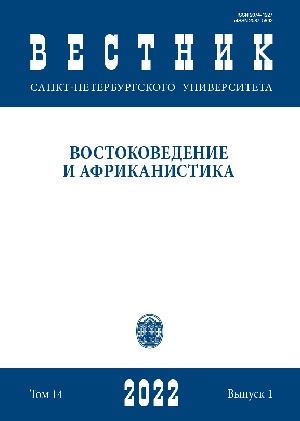Censers in the Incense Culture of Japan: From Mainland Borrowing to Creating a Unique Tradition
DOI:
https://doi.org/10.21638/spbu13.2022.102Abstract
Incense culture has long played an important symbolic and sociocultural role in countries of East Asia, reflecting general trends in the development of culture throughout different historical periods. At this time, traditional incense culture in Japan can be observed in three key areas: religious, sanitary and hygienic, and artistic. All these spheres represent a certain projection of historical and cultural processes in the region. Since the introduction of Buddhism in Japan in the 6th century, mainland traditions were assimilated through religious, everyday life, and artistic practices. At the same time, new principles at the level of concepts, forms, and symbolism of products were being developed to make the most of the rich arsenal of incense culture. The article briefly presents the evolution of censers as the main element of the incense culture toolkit and identifies the key trends of their manufacture in Japan. Through the analysis of the specific characteristics of Japanese censers, a brief overview of the existing incense culture and production centers is given and their continuity with mainland traditions is emphasized. Simultaneously, specific characteristics have been identified that make it possible to consider the Japanese tradition of making censers from ceramics, porcelain and bronze as a unique national achievement.
Keywords:
incense culture, East Asia, Japan, censers, incense burners, mainland influence, ceramics, bronze, Arita, Nabeshima, Satsuma, Kutani, Kiyomizu, Takaoka techniques
Downloads
References
Downloads
Published
How to Cite
Issue
Section
License
Articles of "Vestnik of Saint Petersburg University. Asian and African Studies" are open access distributed under the terms of the License Agreement with Saint Petersburg State University, which permits to the authors unrestricted distribution and self-archiving free of charge.





